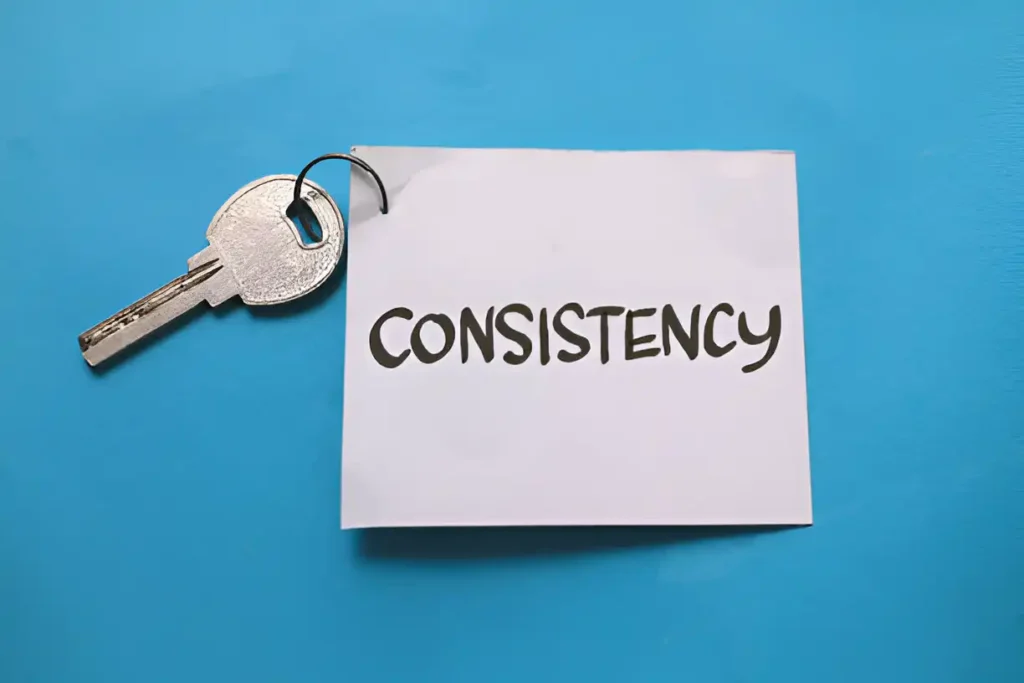Introduction
Divorce is an incredibly challenging experience for any family, especially when children are involved. The process can be emotionally overwhelming, but understanding its impact on your children and knowing how to support them through this transition can make a significant difference. Creating a smooth transition is crucial in helping children cope better and reducing the stress they experience. This guide is designed to empower parents to foster a supportive environment that prioritizes their children’s well-being while navigating the complexities of divorce.
Understanding the Emotional Impact of Divorce on Kids
Divorce can turn a child’s world upside down, triggering a range of emotions from sadness and confusion to fear and anxiety. For children, the family dynamic they know is changing, which can leave them feeling insecure and vulnerable. Many children might worry that they are somehow to blame for the separation or fear losing the love of one of their parents. Recognizing and understanding these emotional challenges is the first step in helping children adjust.
Importance of a Smooth Transition for Kids
A smooth transition during divorce is vital to helping children adjust to new family dynamics. When parents handle the separation with empathy and care, children are more likely to feel secure. They need constant reassurance that they are still loved and valued by both parents, which can greatly affect their ability to adapt to the changes.
Minimizing Stress with Effective Strategies
The following strategies can help minimize the emotional stress children face during a divorce. By focusing on open communication, maintaining routines, and providing professional support when needed, parents can create a stable environment that places their children’s mental and emotional health at the forefront.
Setting the Stage for a Smooth Divorce with Kids

Communicating the Decision to Divorce to Your Children
Breaking the news of divorce to children is one of the most challenging moments in the process. Both parents should be present for this conversation, approaching it with honesty and sensitivity. Explain the decision in a way that is appropriate for your child’s age, and emphasize that the divorce is not their fault. Reassure them that both parents will continue to love and care for them.
Choosing the Right Time and Place for the Conversation
The timing and setting of this conversation are crucial. Choose a time when you are not rushed or distracted, and ensure a calm, private environment. Avoid high-stress times such as before school or bedtime. A quiet setting will allow children to express their feelings openly. Thoughtful timing and a conducive environment can make this conversation less overwhelming for them.
Presenting a Unified Message
Children need to know that, despite the separation, both parents remain committed to their well-being. Presenting a unified message minimizes confusion and prevents children from feeling caught in the middle. Agree on what you will say and how you will respond to their questions, ensuring they receive consistent information from both parents.
Managing Emotions for Parents and Kids
Coping with Your Own Emotions Before Talking to Your Kids
Before discussing the divorce with your children, it is important to process your own emotions. Children are perceptive, and if they sense your anger or sadness, it may amplify their own fears. Take time to reflect, seek support, and work through your emotions so you can approach the conversation with calmness and clarity.
Helping Kids Express Their Feelings
Encourage your children to share their feelings without fear of judgment. Let them know that it is okay to feel sad, angry, or confused. Create a safe environment where they can freely express their thoughts. For example, say, “It’s okay to feel sad about this. I am here to listen.” This validates their emotions and helps them feel supported. You could also provide activities or tools to help them express their emotions, such as drawing, journaling, or using emotion cards. These methods can make it easier for children to articulate their feelings, especially if they struggle with verbal expression.
Understanding Common Emotional Reactions in Kids
Children may react differently to divorce—some may become withdrawn, while others might act out. Understanding these reactions helps parents respond appropriately. Younger children may experience separation anxiety, while teenagers might feel anger or betrayal. For example, if your younger child is experiencing separation anxiety, you could create a comforting bedtime routine, such as reading a favorite story together or spending extra time cuddling before bed. Patience and empathy are essential to helping children cope. For instance, if your teenager is angry, acknowledge their feelings by saying, “I understand why you’re upset. Let’s talk about how we can make this easier for you.”
Strategy 1: Prioritizing Open Communication
Encouraging Your Children to Ask Questions
Children will likely have many questions about what the future holds. Encourage them to ask anything that’s on their mind, and answer with honesty while keeping responses age-appropriate. For example, if your child asks, “Will I still see both of you?”, you can respond with, “Yes, both of us love you very much, and we will both spend time with you. You will have time with each of us, and we will make sure you are taken care of.” Open communication will help alleviate their fears and prevent them from feeling lost in uncertainty.
Providing Age-Appropriate Explanations
Different age groups require different levels of explanation. Younger children need simple assurances of both parents’ love, while older children may need more details about logistical changes. Tailoring your responses helps children feel informed without feeling overwhelmed.
Maintaining Honesty Without Overwhelming Details
Honesty is crucial, but avoid overwhelming children with unnecessary details, especially regarding adult conflicts. Focus on what directly affects them, and reassure them of your ongoing love and support.
Strategy 2: Consistency Is Key

Establishing Routines During the Transition
Divorce can disrupt daily routines, but maintaining consistency helps children feel secure. Keep mealtimes, bedtimes, and other daily activities as consistent as possible. For example, maintaining a daily after-school snack time or a regular weekend activity like visiting the park can provide comfort and stability. Familiar routines provide stability during uncertain times.
Creating Stability with Familiar Activities
Continue familiar activities that your children enjoy, such as weekly movie nights or bedtime stories. These small but meaningful traditions help create a sense of stability and comfort during this period of change.
Managing Changes Without Disrupting Core Routines
While change is inevitable, try to keep core routines intact. If a parent moves out, ensure that routines such as school pick-ups or extracurricular activities remain unchanged. Minimizing disruptions helps children adjust more smoothly.
Strategy 3: Collaborative Co-Parenting
Benefits of Working Together for Your Kids’ Well-Being
Collaborative co-parenting ensures that children continue to receive love and support from both parents. Working together reduces conflict and creates an environment where children can thrive. Always prioritize what is best for the child. Divorce requires careful co-parenting to make sure the children feel supported.
Setting Healthy Boundaries with Your Co-Parent
Setting boundaries helps maintain a respectful co-parenting relationship. Clear guidelines for communication and responsibilities prevent misunderstandings and ensure interactions remain focused on the children. For example, you might limit discussions about disagreements to email rather than in-person conversations. This helps keep interactions calm and focused on the children’s needs.
Making Joint Decisions About Childcare
Co-parenting involves making joint decisions about important aspects of your child’s life, such as education and healthcare. When both parents are involved in these decisions, it reinforces to the child that both parents are committed to their well-being.
Strategy 4: Seeking Professional Support

When to Consider Family Counseling
Family counseling can be helpful if children are struggling to cope. A counselor provides a neutral space for children to express their feelings and offers strategies to help the family adjust. Seek professional help if your child shows signs of anxiety or behavioral changes.
Finding the Right Therapist
Finding a therapist who connects well with your child is key. Look for a therapist experienced in family or child therapy, and involve your child in the decision if appropriate. A good therapist can significantly help your child navigate the emotions of divorce. Consider asking potential therapists questions such as, ‘What is your experience working with children going through divorce?’ or ‘How do you approach helping children express their feelings?’ These questions can help ensure the therapist is a good fit for your child’s needs.
Using Mediation to Keep Conflict Away from Kids
Mediation can help resolve conflicts without involving the children. Mediators can help parents come to agreements on contentious issues, shielding children from unnecessary stress and conflict.
Strategy 5: Avoid Negative Talk About the Other Parent
Why It’s Important Not to Criticize the Other Parent
Children love both parents and can feel torn if they hear negative remarks. Criticizing the other parent can make children feel they must take sides, adding to their stress. Instead, maintain a positive atmosphere that encourages respect.
Supporting Your Kid’s Relationship with Both Parents
Encourage your children to maintain a healthy relationship with both parents. Support their time with the other parent, and speak positively about them. This helps children feel secure in their relationships and reassures them that they do not have to choose sides.
Modeling Respectful Behavior
Children learn by observing their parents. Modeling respectful communication teaches them how to handle disagreements constructively, benefiting them within the family and beyond. For example, using ‘I’ statements during disagreements, such as saying ‘I feel upset when this happens’ instead of blaming, helps model healthy communication.
Strategy 6: Allow Kids to Have a Voice
Listening to Your Kids’ Concerns
Children need to feel that their voices are heard. Listen to their concerns and preferences, whether about living arrangements or how they spend time with each parent. Validating their feelings helps them feel valued.
Empowering Your Kids Without Overwhelming Them
It is important to give children a voice without burdening them with adult decisions. Offer them appropriate choices, like which activities they would like to do, but avoid making them choose between parents or take on responsibilities beyond their age.
Providing Choices to Make Kids Feel Involved
Offer simple choices that allow children to feel involved, such as how they want to decorate their room at each parent’s home. You could also allow them to choose which parent’s house they decorate for a holiday. These decisions give them a sense of control in a situation where much feels out of their hands.
Strategy 7: Self-Care for Parents
How Taking Care of Yourself Helps Your Kids
Your well-being directly impacts your children. When you take care of yourself—physically, mentally, and emotionally—you are better equipped to care for your children. Self-care is not selfish; it is essential to providing the stability they need.
Stress-Relief Techniques for Parents
Single parenting can be overwhelming, so finding stress-relief techniques is crucial. Exercise, meditation, and hobbies can help you recharge. Managing your stress helps you remain patient and present for your children.
Building a Support Network
Do not hesitate to lean on friends, family, or support groups. A strong support network provides emotional and practical help, making the challenges of single parenting more manageable.
Handling Challenges and Setbacks
Dealing with Emotional Outbursts
Emotional outbursts are common during divorce. When these moments occur, stay calm and try to understand the underlying emotions. Offer comfort and reassurance, and address the concerns causing the outburst.
Managing Conflicts with Your Co-Parent
Conflicts are inevitable, but how you handle them matters. Keep communication focused on the children and avoid discussing contentious topics in front of them. Take a step back when disagreements arise, and revisit the issue when emotions have settled.
Adjusting Strategies When Things Don’t Go as Planned
Flexibility is key during this transition. Not everything will go as planned, and that is okay. Be willing to adjust your strategies based on what works best for your children. Learning to adapt will help everyone cope more effectively with the changes.
Tips for Long-Term Emotional Well-Being
Encouraging Healthy Relationships for Kids Post-Divorce
Encourage your children to maintain positive relationships with family and friends. Support their connections with both parents, extended family, and peers. Healthy relationships provide emotional support and stability.
Helping Kids Adapt to New Family Dynamics
As new family dynamics emerge—such as stepfamilies or new living arrangements—help your children adapt by being patient and understanding. Acknowledge their feelings, and give them time to adjust without pressure. Divorce can be particularly challenging during these transitions, so providing extra support and reassurance is crucial.
Monitoring Your Kid’s Emotional Growth
Keep an eye on your child’s emotional well-being over time. Changes in behavior, mood, or academic performance can indicate they need additional support. Address concerns early, and continue providing love and reassurance.
Conclusion
Emphasizing Love and Stability
Above all, remind your children that they are still loved and supported by both parents. Stability and love are the cornerstones of helping them navigate this transition.
Cooperation Between Parents
Even if you are no longer partners, you are still co-parents. Working together is essential for providing a nurturing environment for your kids.
Looking Ahead: Thriving as a Family After Divorce
Divorce marks the start of a new chapter. With love, patience, and effective strategies, your family can thrive in its new form. Focus on growth, resilience, and creating a positive future for your children.
FAQ
1. How do I tell my children about the divorce?
When telling your children about the divorce, it is best for both parents to be present. Choose a calm setting and communicate in a way that is appropriate for their age. Emphasize that it is not their fault and reassure them of your continued love and care.
2. What are some signs that my child is struggling emotionally with the divorce?
Signs that your child is struggling may include changes in behavior, mood swings, withdrawal from activities they once enjoyed, sleep disturbances, or academic difficulties. If you notice these signs, consider seeking professional support.
3. How can I help my child express their feelings about the divorce?
Create a safe space where your child feels comfortable expressing their feelings. Let them know it is okay to feel sad or angry. Encourage them to talk openly, and listen without judgment.
4. Should I involve my child in decisions about custody or living arrangements?
While it is important for children to have a voice, avoid burdening them with major decisions. Offer choices that are appropriate, such as what activities they would like to do, but do not ask them to choose between parents.
5. How do I maintain consistency for my children during the divorce?
Maintaining routines can help provide a sense of normalcy. Keep mealtimes, bedtime, and other daily activities consistent, and ensure that core routines are not disrupted by the changes.
6. Is family counseling beneficial during a divorce?
Family counseling can be very beneficial, especially if children are struggling to cope. A professional can provide a neutral space for everyone to express their feelings and help the family adjust to the new dynamics.
7. How can I co-parent effectively with my ex-spouse?
Effective co-parenting involves open communication, setting healthy boundaries, and focusing on what is best for the children. Divorce can be challenging, but working together to make decisions about their well-being, and always presenting a unified message to your children can make a significant difference.
8. What should I do if my co-parent speaks negatively about me in front of the children?
If your co-parent speaks negatively about you, avoid retaliating in front of the children. Instead, reassure your children that both parents love them and try to maintain a positive atmosphere. If necessary, discuss the issue privately with your co-parent.
9. How can I manage my own stress during the divorce?
Self-care is essential. Find stress-relief techniques that work for you, such as exercise, meditation, or spending time with friends. For instance, a daily walk in nature or a yoga session can help you stay grounded. Building a support network, such as joining a local parenting group or seeking help from family members, can also help you manage the challenges of single parenting and provide emotional support during tough times.
10. How can I help my child adapt to new family dynamics, such as a stepfamily?
Be patient and understanding as your child adjusts to new family dynamics. Acknowledge their feelings and give them time to adapt. For instance, you can let your child know that it’s okay to feel sad or uncertain, and reassure them that you’re there to support them. Encourage positive relationships by arranging fun activities with new family members or spending quality time together, while allowing your child to process their emotions at their own pace.






Trackbacks/Pingbacks